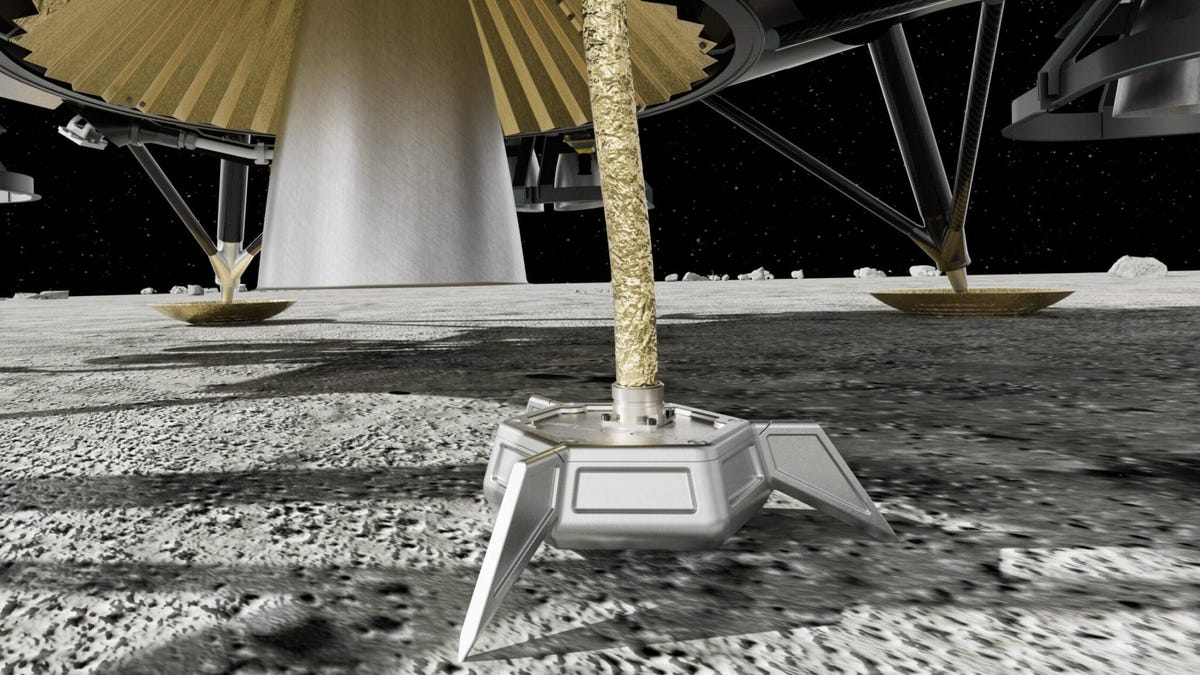A new payload has been added to Firefly’s upcoming mission to the far side of the Moon, one that will explore the lunar subsurface to find out if it can support future infrastructure.
The New M3-Powered iMacs Are Triggering Serious Deja Vu
Australia’s Fleet Space Technologies is launching its SPIDER (Seismic Payload for Interplanetary Discovery, Exploration, and Research) on board Firefly’s Blue Ghost lunar lander, which is scheduled to liftoff to the lunar far side in 2026, the company announced on Wednesday. SPIDER will travel alongside payloads belonging to NASA and the European Space Agency (ESA).
SPIDER is designed to capture seismic data from the lunar surface for up to 14 days. Using this data, scientists will be able to learn more about the geological properties of the Moon’s subsurface, as well as the presence of water ice beneath the surface, which could support future infrastructure as part of upcoming missions to Earth’s satellite.
“Any infrastructure built on other worlds will depend on a deep understanding of the [on site] subsurface composition—and we’re honored to collaborate with the international community to help unlock critical insights for sustaining human life beyond Earth,” Matt Pearson, Co-Founder and Chief Exploration Officer at Fleet Space Technologies, said in a statement.
The Blue Ghost lander will provide power and communications for SPIDER on the lunar surface.
SPIDER is part of the Australian Space Agency’s Moon to Mars initiative, which is aligned with NASA’s efforts to use the Moon as a gateway to get to Mars. “The Firefly team welcomes Fleet Space on our far side lunar mission that will serve as a critical building block for future human and robotic missions to come,” Bill Weber, CEO of Firefly Aerospace, said in a statement.
Texas-based Firefly Aerospace aims to provide private and public customers with access to space, delivering payloads to the surface of the Moon. The company reached orbit for the first time in October 2022 with its Alpha rocket, but it ended up delivering its payload to a lower orbit than intended. In September of this year, Firefly successfully delivered a Millenium Space Systems satellite to low Earth orbit as part of the U.S. Space Force’s rapid response Victus Nox mission; the company achieved the mission’s critical objective by finalizing all launch-related arrangements in under 24 hours.
Related article: Firefly Aerospace Sets New Launch Speed Record for U.S. Space Force Mission
Despite being a novice in the space industry, the company has already landed two NASA contracts. In 2021, NASA selected Firefly to deliver a suite of 10 scientific experiments to the Moon’s near side as part of a $93.3 million contract. This first mission, Blue Ghost 1, is scheduled to launch in 2024, carrying an additional two commercial payloads on board. Earlier this year, NASA tapped Firefly for its second mission with a $112 million contract to deliver multiple lunar payloads as part of the space agency’s Commercial Lunar Payload Initiative. Blue Ghost 2 will also carry ESA’s Pathfinder satellite to lunar orbit, where it will serve as a communications relay for other spacecraft on or around the Moon.
Firefly isn’t the only company working on developing commercial deliveries to the lunar surface as part of a growing space economy. Pittsburgh-based Astrobotic has been hard at work developing its Peregrine lunar lander, which was originally slated for launch in late 2022 but suffered delays mainly to do with its launch vehicle, United Launch Alliance’s Vulcan Centaur rocket; Peregrine is now scheduled to launch on Christmas Eve. Meanwhile, Intuitive Machines is gearing up for the launch its Nova-C lander in January 2024, which will carry five NASA payloads to the Moon’s south polar region.
These companies are racing to become the first private venture to land on the surface of the Moon. Japan’s ispace failed in its attempt in April when its Hakuto-R lander miscalculated its distance to the lunar surface. In 2019, Israel’s Bersheet lander suffered a similar fate in its own attempt to become the first private lander to reach the lunar surface.
Private lunar lander missions are set to provide more access to the Moon’s surface with a higher rate of trips to Earth’s satellite at a cheaper price, regardless of who touches down on the lunar surface first.
For more spaceflight in your life, follow us on X and bookmark Gizmodo’s dedicated Spaceflight page.
